The National Park Service celebrates 100+ years of US National Parks with celebrations and 16 free entry days to our nation’s parks. With 63 US National Parks and hundreds of national monuments and historical parks, it’s tough to choose which to visit. Not to worry though; we’ve reached out to the best resources and asked travel bloggers about which they thought are the best US National Parks and monuments to visit.
And an amazing way to visit US National Parks is to consider traveling by motorhome. Nearly all of the US National Park campgrounds can accommodate motorhomes up to 19 feet in length and 90% of the National Park campgrounds allow motorhomes up to 25 feet. Just don’t forget to purchase temporary motorhome insurance when renting a RV to travel around to US National Parks.
To make things a bit easier for your browsing, you can use the links below to jump to a specific National Park or monument. Or browse the entire list for a little inspiration.
Denali National Park & Preserve, Alaska
Denali National Park and Preserve is where spectacular scenery reigns, and all you need to do to see it is to travel the 92-mile Denali Park Road.
Alaska’s most well known national park, hundreds of people see sights that will stay with them the rest of their lives, and the view of the tundra over Sable Pass is a fantastic excuse to jump off the park shuttle bus for some hiking. On a clear day as you come down Sable Pass to the south, the clouds will part to reveal the stunning Mt McKinley, about 55 miles away.
While backcountry hiking is available throughout the majority of Denali National Park, the section of country on either side of the Sable Pass, mile 37-43, is the only permanently closed area for off road hiking within the park. This is a sweet spot for bears, wolves, caribou and moose, so the “no hiking through the tundra” rule is for the preservation of both wildlife and tourists alike; a reasoning which is fairly apparent by the grizzly bear chew marks in the wooden Sable Pass sign!
Tip: Denali National Park & Preserve is bear country and you never know when you might encounter one. Be prepared with these great bear safety tips from Mapping Megan.
Glacier Bay National Park, Alaska
Glacier Bay National Park is a World Heritage Site covering 3.3 million acres of pristine wilderness in Alaska. In 1986, UNESCO created the largest protected Biosphere Reserve in the world on 57,000 acres within the park. Part of a World Heritage Site of 25 million acres, Glacier Bay is home to rain forest covered mountains, spectacular fjords and magnificent coastlines, but best of all, are the glaciers. This is one of the few places in the world where glaciers can be seen regularly calving into the sea. The primordial sight and sound of massive blocks of ice tearing themselves away from the face of a glacier and crashing into the water below is something you will never forget.
Both on land and in the sea the park is a wildlife watcher’s dream come true with humpbacks, orcas and other whales as well as bears, moose, mountain goats, wolves, coyotes and many smaller animals.
North-west of Alaska’s state capital, Juneau, Glacier Bay is not accessible by road. Most visitors arrive by boat either on cruise ships, small boats or private charters, but probably the most stunning way of seeing Glacier Bay is to fly over it. Small plane flight-seeing tours depart from Skagway and Haines. The only hotel accommodation inside the park is the Glacier Bay Lodge at Bartlett Cove. See more photos of Glacier Bay on The Travelling Lindfields.
Tip: The National Park Service imposes restrictions on the number of boats which can operate in the park each day so book ahead and if you plan to see this part of Alaska on a cruise ship make sure your itinerary includes Glacier Bay.
Wrangell – St. Elias National Park, Alaska
Antoinette of We 12 Travel has visited Alaska six times and no matter how beautiful and rugged everything is there, Wrangell-St. Elias National Park will always be her favorite. The park is accessible on a poorly maintained unpaved road, which can only be driven by high clearance vehicles. If you want to travel in the Alaskan way, though, you have to take a bush plane in – a truly spectacular way of traveling. There aren’t any roads inside the park, so this means all has to be accessed on foot or by plane.
Tip: Antoinette’s favorite activity is definitely heading on to Root Glacier for hiking and ice climbing. If you want to take it easier, make sure to take a tour inside the historic Kennicott Mine Buildings. Stay is at Ma Johnson’s Hotel in the town of McCarthy, which you may have seen on the tv show Edge of Alaska. The wilderness of Wrangell St. Elias National Park is truly unique and can’t be found anywhere else.
Grand Canyon National Park, Arizona
The Grand Canyon National Park is one of the crown jewels in the National Park System. The Grand Canyon is the 15th oldest park and is one of the largest outside of Alaska. The Grand Canyon was also recognized as one of the first UNESCO World Heritage Sites in the US. At over 275 miles long, 18 miles wide and over a mile deep, the Canyon is massive and visible from space.
There are two ways to appreciate the Grand Canyon: from above and below. Most visitors drive along the South Rim and view the stunning cliffs of the North Rim across the Canyon. Some visitors may even hike along the more remote sections of the rim. However, fewer visitors hike down into the canyon and the backcountry. The National Park Service limits backcountry camping to just 13,000 permits per year. The truly adventurous will actually whitewater raft through the canyon on a 5-18 day trip that will get your heart pumping!
Find more about visiting the Grand Canyon on Travel Addicts.
Tip: The Grand Canyon is one of the most visited National Parks. If you want to escape the crowds, head to the North Rim, or visit in the winter when there are fewer visitors. Snow is common in the winter, and makes for beautiful pictures.
Organ Pipe Cactus National Monument, Arizona
Organ Pipe Cactus National Monument is located in southern Arizona between Tucson and Yuma. Its 517 square mile area is part of the Sonoran Desert and serves as a pristine example of desert wilderness. Its namesake flora, the organ pipe cactus, is quite rare within the United States, but is only one of 26 species of cacti thriving in this region. Because of the unspoiled nature of habitat within the Monument, it has also been designated as an International Biosphere Reserve.
Tip: Organ Pipe Cactus National Monument comes alive with color in late spring with the annual desert bloom. Usually in late May or early June, the bloom will vary depending on weather conditions and rainfall. Check with the park office for current conditions. Find more about desert hiking safety on Bucket List Travel Club.
Death Valley National Park, California and Nevada
Death Valley National Park probably has the scariest name in the whole NPS. Being the lowest, driest and hottest area in North America certainly plays its part but don’t let the name fool you. Death valley is a spectacular National Park with plenty of things to see. Its landscape is one of the rawest and harshest to be found anywhere in the United States, with salt flats, sand dunes, badlands, valleys, canyons and mountains. And it’s massive, occupying land in both California and Nevada.
Highlights of the Park include Scotty’s Castle (yes, a castle-like building in the middle of nowhere), Mesquite Flat dunes, the colorful Artist’s Palette, Zabriskie point and Badwater basin. The last one being the most impressive place, a salt flat at 86 metes below sea level. *Note that Scotty’s Castle is closed until further notice after extensive flood damage occurred in October 2015.
The best way to explore the Park is by driving. The distances to cover are considerable and there are no other real options. Find more about visiting Death Valley on Breathe With Us.
Tip: Avoid visiting in the Summer months as the temperatures soar to dangerous levels. September is a great month to visit with the temperatures getting lower and good enough for visiting. Remember to carry plenty of water. Late afternoons provide spectacular sunsets across the valley.
Joshua Tree National Park, California
Joshua Tree National Park, located near Palm Springs in Southern California, is a massive park, slightly larger than the state of Rhode Island. It is so large, it has two distinct ecosystems in the Mojave Desert in the higher altitudes and the Colorado Desert below 3000 ft. It’s most iconic feature, the Joshua Tree, can only be found here in the Mojave. With more than 500 archaeological sites, numerous historic structures and a dozen self-guided hikes, there is much more to this park than just unique looking trees.
From bare rugged mountains dotted with homesteads and old mines waiting to be explored to exposed granite monoliths luring climbers of all skill levels, there is much to dig into in this seemingly unwelcoming of landscapes. With brutal heat in the summer and frigid nights in winter, you will wonder if anything survives here. At the edges of daylight is when you will have your answer. You will began to see and hear a variety of desert animals come out of their hiding places. The desert tortoise, roadrunners, coyotes and big horn sheep are some of the animals who call this parched land home.
The other worldliness of Joshua Tree will mesmerize you and keep you coming back for more. The out stretched arms of the Joshua Tree, the ‘cuddly’ cholla cactus lighting up the horizon and the giant granite rock formations are just some of the intriguing and photogenic things you will encounter as you hike, bike or drive around this massive park.
There are several easy and quick hikes for all skill levels located throughout the park. Barker Dam and Hidden Valley are two that are worth making a stop to check out. Barker Damn is a sandy trail leading you through granite rock piles, petroglyphs, and by a pool of water (sometimes). For more detailed information on how to spend your time at Joshua Tree, visit No Back Home.
Tip: There are absolutely no facilities (water, food or gas) within the park, so load up before you enter. Distances between the multiple gates are more than 30 miles apart. It is very dry with extreme temperature changes from day to night, requiring several layers and an abundance of fluids to keep hydrated.
Lassen Volcanic National Park, California
When planning a trip of National Parks in California, most people think of Yosemite, Death Valley, or Joshua Tree. But don’t forget about Lassen Volcanic National Park in northern California. This little gem is one of the least visited National Parks, meaning it’s the perfect escape from the far more crowded Yosemite just a few hours south.
This land is still an active volcanic hot spot. Some spots, like Lassen Peak, are dormant. Lassen Peak last erupted in 1915, and the eruption destroyed large swaths of the land; many of these scars are still visible today. Evidence of volcanic activity is all over the park, but it’s especially obvious by taking a short hike out to Bumpass Hell, an active hydrothermal basin covered in mudpots and fumaroles. The smell of sulfur is heavy in the air. The constant steam and bubbling liquid reminds visitors of the molten rock just below the surface.
Find more about hiking in Lassen Volcanic National Park on Anywhere At Home.
Tip: Start hiking up the park’s namesake, Lassen Peak, early in the morning to catch the sunrise. You will also avoid hiking the exposed trail at the hottest time of the day. On a clear day at the summit, you can see Mount Shasta in the distance. Keep an eye out for the American Pika, a small alpine critter whose habitat is disappearing due to global warming.
Muir Woods National Monument, California
Just outside San Francisco you’ll find a magical oasis home to towering redwood trees of all ages, the seniors of which are over 600 years old. This green oasis is an ancient red wood forest called Muir Woods. In 1905 William Kent bought the land now known as Muir Woods to protect it and then donated it to the federal government. In 1908, President Theodore Roosevelt proclaimed the area a National Monument and named it Muir Woods in honor of naturalist John Muir.
Now over 100 years later Muir Woods is also a National Monument as well as part of the Golden Gate International Biosphere Reserve, which is one of the richest, as well as most threatened, reservoirs of plants and animal life. Muir Woods isn’t your typical open, airy forest where sunlight bounces off pretty flowers in bloom; it’s dark, damp and it feels like you’re walking through the forests of a Grimm’s fairy tale. It’s this, as well as its intensely green state and massive redwood trees, that make it a truly magical and awe-inspiring place to visit.
Find more about visiting Muir Woods on The World As I See It.
Tip: Go early to beat the tour buses and to ensure you have time to spend exploring all the beautiful paths. Also, you’ll want to layer up your clothing as it’s damp and chilly.
Sequoia & Kings Canyon National Park, California
If you find yourself in Yosemite National Park, just beside it is Sequoia & Kings Canyon National Park. Both Parks are only three hours away from San Francisco or Napa Valley.
The most famous part of Sequoia & Kings Canyon National Park is the Giant Forest, where 5 of the 10 largest trees in the world stand. Our visit there quickly became a comedy because the giant tree we were admiring we later found out was not the largest after all! General Sherman stood a few meters away, 275 feet tall and 36.5 in diameter at its base, the largest living tree by volume at over 50,000 cubic feet. In January 2006, a small branch that fell off measured 6 feet in diameter and 100 feet in length, the size of an ordinary big tree.
Find out more about driving an RV in Sequoia & Kings Canyon National Park on RV Cruising Lifestyle.
Tip: Don’t forget to climb the 400 steps of Moro Rock where the view of the Great Western Divide is spectacular. Also, your car can pass through Tunnel Log, a giant sequoia that had fallen on a road where a hole has been carved out of its trunk. Allow time to visit Crystal Cave and hike through Crescent Meadows. If you are driving the Park in an RV, know that the switchbacks have a 22 foot limit.
Yosemite National Park, California
Yosemite National Park is one of those special places that you can always return to and it will always be different and incredible to experience each time. There are so many amazing hiking trails but my favorite trail is the scenic hike up to Glacier Point, which you can do round trip or just one way to the top or starting from the valley floor.
Tip: If you want to hike only one way to Glacier Point, you can take a shuttle from the top to back to the valley floor or vice versa and take a shuttle from the valley floor to Glacier Point and then hike down to the valley. Visiting at sunset is the most popular time to see Glacier Point, so having transportation set either by driving up or booking your shuttle in advance is advisable.
Mesa Verde National Park, Colorado
In the National Park System, Mesa Verde National Park in Colorado is the only national park that has been founded to protect cultural heritage in addition to nature. Ancestral Pueblo people built majestic cliff palaces in this area in the 13th century, before suddenly disappearing for reasons still unknown to archaeologists.
Mesa Verde has several well known cliff palaces that have been extremely well preserved throughout times, but this is not the only thing the park offers. There are hundreds of smaller cliff houses built on the walls of the mesas, and dwellings have been preserved also on top of the mesas, accessible through short hikes. Because of its status as a protected area, the park is also full of animals and plants, which you can see on longer hikes.
For more information on Mesa Verde and information on different tours, check out this post on Globe Called Home.
Tip: Tickets for tours to visit inside the cliff palaces run out fast – perhaps because a visit of Mesa Verde isn’t complete without one! Tickets can only be bought from Mesa Verde and the nearby Colorado Welcome Center in the town of Cortez, and they go on sale two days in advance, so buy them as soon as you arrive in the area to avoid disappointment.
Rocky Mountain National Park, Colorado
Rocky Mountain National Park, located in Colorado, is 1 Dad 1 Kid’s favorite national park in the US. It has amazing scenery, fantastic hiking, and is a great location for year-round fun. In the winter, you’ll find people snowshoeing through the fantastic trails, and you can even find some of the more adventurous visitors doing Telemark skiing down some of the small mountains.
Tip: One of 1 Dad 1 Kid‘s favorite things about the park, though, is watching the elk. If you visit during the rut (during the fall), you can hear the bulls bugle. The best way to catch sight of the large herds is to visit the large meadow (you drive by it shortly after entering the park from the town of Estes Park) at about 3 PM. During most of the day they’re scattered throughout the park to graze, but they have an enormous gathering to warm up in the afternoon sun. It’s a sight you won’t forget.
Dry Tortugas National Park, Florida
Dry Tortugas National Park is a little different than most national parks. It is inaccessible and most tourists only spend four hours in the park. The park is located about 70 miles from Key West and is only accessible via private boat, ferry or sea plane. Most tourists come with the ferry so their time to explore the park is limited to a tour of Fort Jefferson, exploring the sea wall or snorkeling the reefs near the fort.
The park protects seven Dry Tortuga islands, some of the most pristine reefs in the Florida Keys and Fort Jefferson. Fort Jefferson is an unfinished coastal fortress built to protect the nearby protected anchorage near Key West. Fort Jefferson holds a few historical distinctions. It is the largest masonry structure in the Americas despite being unfinished. The Fort is also one of the few southern forts to remain in the Union’s hands during the American Civil War. After the war, the fort was used as a military prison and became home to Samuel Mudd, the doctor who treated John Wilks Booth’s leg after he shot President Lincoln.
Tip: The best way to explore Dry Tortugas is to camp on the island. There is a small campground outside of Fort Jefferson. It is $3 per night night but one has to get there. The ferry is the cheapest option and will transport camping gear and kayaks for campers to stay up to four days on the island. Once the ferry leaves for the day, almost all the other tourists are gone. Just remember the island is dry so one needs to bring all your own food and water.
Everglades National Park, Florida
Everglades National Park was the first large wilderness area in the United States preserved for biological conservation rather than natural beauty. While the Everglades is continually threatened by encroaching development, the protected 1.5 million acres (third largest National Park in the lower 48 States) houses dozens of endangered and threatened species of animals and plants which are found no where else in the world.
Did you know that the Everglades (which means “river of grass”) is the only place on Earth where alligators and crocodiles live together naturally? With limited time to visit, go to Shark Valley, which is 38 miles west of downtown Miami (straight over on SW 8th Street, aka Calle Ocho or Tamiami Trail). Shark Valley has a 15 mile loop, great for bicycling (rentals available), walking, or a tram tour.
Find more about visiting Everglades National Park on McCool Travel.
Tip: To maximize your chance to see wild gators, visit during the wet season (June to October) or early winter, when they can be found within striking distance of the path (be careful).
Volcanoes National Park, Hawaii
Not many people can say they’ve seen an active volcano, let alone walked on it! That’s why Volcanoes National Park on the Big Island of Hawaii is so unique. Kilauea is the centerpiece of this Park, an active volcano that continues to ooze lava.
The park is quite large with lots of roads, hiking trails, view points and multiple visitor centers. While visiting the park is made safe by the Park Service, adhering to the Park Rangers and rules is a must because conditions can change daily.
Some days you can venture down to the sea and watch lava actively flow into the water, which is particularly spectacular at night, go walking across hardened lava flows that recently made roads impassable, or hike inside a caldera with active steam vents (don’t put your hands over them!).
Find more about visiting Volcanoes National Park on Peanuts or Pretzels.
Tip: Our most memorable experience was at the caldera visitors center at night. Looking out at night we could see the bright red glow of the lava emanating from the hole. That scene combined with the beautifully clear, starry filled sky above was an absolutely amazing sight to behold.
Craters of the Moon National Monument & Preserve, Idaho
Craters of the Moon might be the weirdest spot in the National Park system. Named for it’s out-of-this-world landscape, this land was once on top of the hotspot that is now underneath Yellowstone National Park. Today, the Craters of the Moon is filled with hardened lava flows, spatter and cinder cones, and lava tubes for visitors to explore. Visitors will find hiking throughout the park, as well as caving, camping and biking.
One of the best ways to experience Craters of the Moon is to explore the lava tube caves that were created thousands of years ago. Lava Tube caves offer a brief respite from the summertime heat. Don’t forget to bring along a headlamp, and head out on the Caves trailhead to explore four different caves.
Find more about visiting Craters of the Moon on Anywhere At Home.
Acadia National Park, Maine
The crown jewel of America’s east coast, Maine’s Acadia National Park attracts millions of visitors every year. Granite peaks give way to pine covered forests, ruggedly dramatic cliffs and rocky shores, the surrounding bays dotted with emerald green islands; it’s easy to see why the 19th century aristocracy made Acadia their summer playground. Arcadia’s most famous landmark , Cadillac Mountain towers at 1530 feet high making it the highest point along the Atlantic seaboard and the first place in the United States to see the sunrise each morning.
Find more about visiting Acadia National Park on Casual Travelist.
Tip: Looking to get away from the crowds near Bar Harbor? Head past the sleepy fishing village of Southwest Harbor to what locals refer as “The Quiet Side”; this southern loop of Acadia offers up spectacular views with a bit of solitude.
Chesapeake & Ohio National Historical Park, Maryland, DC and West Virginia
Most people think of the Chesapeake & Ohio Canal as a time capsule that tells the story of transportation history when the canal was a lifeline that carried coal, lumber and agricultural products along the Potomac River. But along the tow path that spans 184.5 miles from Georgetown to Cumberland, Maryland, adventurers and outdoor lovers will discover some of the best hiking in the Washington DC area along the Billy Goat Trail. Divided into three sections, each trail includes rock scrambling, sweeping views of along the Potomac River and a chance to forget that you are just miles away from the politics and bustle of Washington DC.
Tip: Parking can be found either at Great Falls Visitor Center (for a fee) or at the access across from Old Angler’s Inn (for free). If you are planning to visit on a weekend, be aware that parking at the Old Angler’s lot fills up so it is best to get an early start.
Pictured Rocks National Lakeshore, Michigan
Pictured Rocks National Lakeshore is located on the upper peninsula (the U.P.) of Michigan on the shores of Lake Superior. It encompasses more than 70,000 acres and 42 miles of pristine shoreline. The name Pictured Rocks comes form the 200 foot high colored sandstone cliffs that tower above the lake. Over the course of thousands of years, the cliffs have been sculpted to form all kinds of caves, arches, and crazy formations.
Find more about visiting Pictured Rocks National Lakeshore on Back Road Ramblers.
Tip: Our favorite spot was the famous Log Slide just west of Grand Marais. There’s a short trail to the top of the slide, which was once used by lumberjacks to send logs into the lake below. The top of the slide is an amazing spot to view the surrounding dunes and the turquoise lake below. If you’re up for and adventure, it’s a 5 minute run down the steep slope to the water’s edge, but a grueling walk back up that will take you at least 45 minutes.
Voyageurs National Park, Minnesota
Located in northern Minnesota along the Canadian border, Voyageurs National Park is home to more than 30 lakes and 900 islands. The park is one-third water, and the majority of its landmass is only accessible from the maze of lakes and rivers that twist throughout the park. Voyageurs National Park was named after the French Canadians who paddled the waters in canoes while working for fur trading companies—they would often paddle up to 16 hours per day and were famous for their stamina.
In the summer, visitors can kayak, canoe, boat, fish, hike over 50 miles of trails, or go camping in either a campsite or houseboat. Winter brings another list of adventures such as snowmobiling, ice fishing, cross country skiing, snowshoeing or winter camping. Wildlife such as loons, bald eagles and wolves live throughout the park, so be sure to keep an eye out as you explore.
Find more about camping in Voyageurs National Park on Wander the Map.
Tip: Campsites are accessible by boat only. One perk to this is that most campsites are very private and secluded, and they are all waterfront with no neighbors close by. If you prefer a less rustic experience, rent a houseboat and tie up to one of the many houseboat sites throughout the park. Both houseboat sites and campsites require advanced reservations, so don’t forget to plan out your journey in advance.
Glacier National Park, Montana
Montana’s Glacier National Park is a adventure seeker’s paradise with over 700 miles of hiking and biking trails taking your through rugged mountains, alpine meadows and past spectacular lakes. Though winter isn’t the best time to visit if seeing the famous white mountain goats is on your bucket list (they head higher up to the inaccessible rocky cliffs), it is the best time to make the least impact on this pristine nature park. With snow dusted trees and glistening lakes and rivers, winter in Glacier National Park will leave you absolutely breathless.
Tip: Winter is a gorgeous time to visit Glacier National Park. Head to the Apgar Visitor Center, where you can rent snowshoes for just $2. Join the guided snowshoe hikes at 10:30am and 2pm on Saturdays and Sundays January through March with a park ranger. Note that snowshoe rentals are only available in the park for the guided snowshoe hikes, but you can bring your own (or cross country skis) and access the trails anytime.
Chaco Culture National Historical Park, New Mexico
If the indigenous culture of the American Southwest interests you, put Chaco Culture National Historical Park on your New Mexico itinerary. It’s not easy to get to but it’s worth the trip. No matter which direction you come from some of the trip is over rough dirt roads.
Chaco Canyon was inhabited from 850 to 1250 A.D. when it was abruptly abandoned, perhaps due to severe drought but no one knows for sure. Sophisticated architecture and road systems at the UNESCO World Heritage site boggle modern-day archaeologists, architects and engineers. The presence of many kivas (ceremonial chambers) is evidence that it was a ceremonial center. There’s also evidence of wide-spread trade with the people from Mexico, California and Texas. Parrot and macaw feathers and remains of cacao have been discovered there. But, much about Chaco is still a mystery.
Tip: Visit the site at sunrise on the solstice or equinox. The ancients at Chaco sited three stone slabs on a south canyon wall. On these days, rays of light shine onto two spiral petroglyphs (stone carvings in the rock face). These events are by reservation only. Limited camping is available.
Great Smokey Mountains National Park, North Carolina and Tennessee
Originally established in 1940, the most visited of all U.S. National Parks (attracting around 9 million people annually) is also among its most beautiful. Approximately 95% of Great Smoky Mountains‘ 522,419 acres are made up of lush green forests teeming with flora and fauna, with approximately 10,000 plant and animal species that include black bears, deer, birds and much more. There are also 16 mountains in the park with towering summits reaching 6,000 feet or more; nearly 900 miles of hiking trails; and Blue Ridge Parkway driving tours that provide gorgeous viewpoints at places like Cade’s Cove and Newfound Gap Road.
Tip: Green Global Travel says autumn is arguably the best time of year to visit the park. Not only because of the cooler weather and richer colors, but also because the famous Cataloochee Valley elk herd is in rut.
Theodore Roosevelt National Park, North Dakota
Located in the Badlands of North Dakota, Theodore Roosevelt National Park is part wildlife sanctuary, part wild west. The park was established in 1947 to honor President Theodore Roosevelt who owned a ranch nearby. The area inspired Roosevelt’s strong conservation efforts across the nation. The wildlife that inhabits Theodore Roosevelt National Park is incredible. Plan on seeing bison, wild horses, deer, pronghorn, elk, and the cutest little critters – the prairie dogs. Our favorite hike was the Petrified Forest Loop in the South Unit.
Find more about hiking in Theodore Roosevelt National Park on Back Road Ramblers.
Tip: For extreme solitude in an already quiet park, wake up early and hike the 10 mile Petrified Forest Loop Trail in the South Unit. Wear long pants for this hike as the sharp prairie grass is very abrasive. The bison have knocked down some of trail signs, so it’s important to bring a map and follow it carefully. The hike takes you through the third largest collection of petrified wood in the country, and chances are, you won’t see another human being on the trail. The loop takes about 4 and 1/2 hours to hike at a normal pace, even with kids.
Crater Lake National Park, Oregon
Crater Lake National Park in Oregon is one of the park system’s gems. Its centerpiece is America’s deepest lake that was created by Mount Mazama’s eruption in 5700 BC. The park has a 33-mile (53 km) Rim Drive with over 30 lookout points and dramatic views of the lake. Since there are no rivers or streams going into Crater Lake, it is one of the cleanest bodies of water in the world. The lake is six miles across and has stunningly clear and blue water.
The park also has over 90 miles of trails for all ages and levels. Visitors can even climb some of its over 40 extinct volcanoes. Cross-country skiing and snowshoeing are available in the park during the winter. Summer is the ideal time to visit with great weather and visibility.
Find more about visiting Crater Lake National Park on The World is a Book.
Tip: The best thing about visiting during the summer is the opportunity to cruise on the only authorized boat to go around the lake. The park rangers lead the tours for an in-depth look at the lake’s natural and cultural history, geology and biology. The cruise is only available from late June to mid-September and highly dependent on weather. Book this tour online or by calling 888-774-CRATER as soon as you know your travel plans.
Badlands National Park, South Dakota
During a road trip from New York to Colorado Alyssa from Adjust Your Focus was fortunate to experience several National and State Parks, one of which was Badlands National Park in South Dakota. With more than 240,000 acres of pinnacles, sharply eroded buttes and spires blended with the largest protected mixed grass prairie (keep an eye out for prairie dogs) in the USA, it is easy to get lost in the ever changing landscape. Drive around the park but be sure to stop at as many lookouts as you can. Take a minute to stand there and really look at the captivating views and magical place you are seeing, first hand. It is something special.
Tip: Go early in the morning or during sunset in the evening. You will not only have a better chance at spotting wildlife, but during that golden hour when the sun hits the sedimentary rocks, the color within each layer really stands out.
Big Bend National Park, Texas
Big Bend National Park is one of the least visited national parks. With 800,000 acres of land and only 300,000 visitors per year you can enjoy wide open spaces. Hiking is popular in Big Bend and with over 150 miles of trails you can choose from hikes in the desert, mountains, or along the Rio Grande.
Visitors to Big Bend National Park enjoy scenic drives, camping, hiking, horseback riding, river trips, fishing, backpacking, bird-watching, and wildlife viewing. Big Bend is one of the darkest places in the lower 48 states. Spectacular views of the Milky Way Galaxy and celestial events can be seen from Big Bend.
For more information about hiking at Big Bend National Park read this post at Solo Trips And Tips.
Tip: Big Bend shares 118 miles of border with Mexico and a visit to Mexico is possible at the Boquillas Crossing within Big Bend National Park. Bring your passport if you want to make the border crossing to Mexico at Boquillas Crossing. Buy tickets for the ferry crossing at the Rio Grande Village camp store. $5 per person round-trip. Hours are 9am – 6pm Wednesday – Sunday.
Arches National Park, Utah
Utah has the highest concentration of National Parks in the country but the best one, in my opinion, is Arches National Park. The reason? You can get right up close to many of the arches and sit under some of them even, which you can’t do in many other parks. Many of the hikes in Arches National Park are short and easy for children or people with limited mobility.
Find more about visiting Arches National Park on Flashpacker Family.
Tip: Explore Arches National Park in winter. The colder temperatures are much easier for hiking, you’ll still get beautiful blue sky and experience fewer crowds.
Bryce Canyon National Park, Utah
Bryce Canyon is a uniquely beautiful National Park filled with vibrant orange hoodoos and stunning vistas. Hoodoos are found elsewhere but Bryce Canyon has the largest collection of anywhere in the world. The park road has 14 scenic viewpoints along an 18-mile (each-way) drive.
For more information on a road trip through Bryce Canyon National Park, check out this post on Escaping Abroad.
Canyonlands National Park, Utah
As the name suggests, Canyonlands National Park is known for its dramatic geological landscapes. A vast part of southeastern Utah where visitors come to explore redrock gorges cut deep by the Colorado and Green Rivers and their tributaries. One of these, Horseshoe Canyon – added to the Park in 1971, has what is widely said to be one of the finest prehistoric rock art sites in the USA.
On the wall of a rockshelter overlooking the canyon’s riverbed is a 60 meter long ‘gallery’ of pictographs. Over 20 human-like painted figures, made hundreds of years ago by Native Americans. Some of these are more than two meters high, and appear ghostly, floating against the sheer cliff faces. After a 700 foot drop into the canyon, only possible on foot, a gentle 3.6 mile hike along a cottonwood canyon floor gets you to this spectacular rock art site.
For more information about hiking to the Great Gallery in the Horseshoe Canyon of Canyonlands National Park and more about archaeology in Utah, see this guide on Archaeology Travel.
Tip: It can get very hot in the Canyonlands; in summer temperatures often exceed 100°F. Not surprisingly then, the best time of the year to visit is spring and fall. Even at these times water sources in the canyon are unreliable, so make sure you carry enough for a five or six hour round-trip from where you leave your car.
Monument Valley National Monument, Utah
Monument Valley, while technically a National Monument and not a National Park, it deserves a spot on this list because travelers have the opportunity to sleep under the stars with the Diné Tribe, more commonly known as the Najavo Tribe. The burnt orange sands of Monument Valley make excellent backdrops for cowboy and space movies, which it has been the setting for in the past. It is a very photogenic place, especially when hot air balloons are spotted in the sky.
Tip: Opt for the overnight stay as opposed to a day tour. You get to watch the sunset, sleep under the stars and watch the sunrise. It’s really something special.
Zion National Park, Utah
With narrow slot canyons, 3,000 foot sandstone walls, and the lush Virgin River, you can pack the best of southern Utah’s desert landscapes into a single weekend at Zion National Park. Don’t miss climbing the knife-ridge up the Park’s famed Angel’s Landing or wading through the turquoise water in the Zion Narrows. On-site campgrounds and an efficient Park shuttle system make exploring hassle free, and the local town of Springdale offers plenty of modern amenities.
Find more on trails, where to camp, and other things to do in the area, check out this first-timer’s guide to Zion National Park on Bearfoot Theory.
Tip: For the best experience on the Park’s busier trails, wake up extra early to beat the crowds.
Manassas National Battlefield Park, Virginia
Manassas National Battlefield Park is both a national park with nature to explore and the historical site of not one, but two Northern Virginia Civil War battlefields. The most visited of the battlefields is that of the Battle of First Manassas, or First Battle of Bull Run. This battle was the first major land battle of the Civil War. The battlefield is right behind the visitor center and has cannons, a statue of Stonewall Jackson, and a home that was rebuilt after being decimated in the crossfire.
Tip: Many visitors skip the battlefield of the Battle of Second Manassas, or Second Battle of Bull Run, but our tip is to be sure to visit this battlefield too. The second battle lasted longer and covered more ground, so there are a lot more sites to visit relating to the second battle. Our favorite hike of Manassas National Battlefield Park is the Unfinished Railroad Loop Trail, which was the center of Stonewall Jackson’s line during the battle. It’s hard to imagine while hiking through such beauty that over 150 years ago young men were fighting and dying in the very same spot.
Shenandoah National Park, Virginia
Shenandoah National Park encompasses 200,000 acres along a ridge of the Appalachian Mountains in northwestern Virginia. The centerpiece of the park, the 105 mile long scenic Skyline Drive offers easy access to incredible views, excellent hikes, and beautiful nature. There are 75 overlooks along Skyline Drive, so it’s best to pick and choose your stops, especially when traffic is heavy during Fall foliage season. Pick a few east-facing stops, and a few west-facing for the best variety—we recommend Range View, Hazel Mountain, Stony Man, Thorofare Mountain, Old Rag, and The Point in the north and central park.
Find out more about viewing Fall foliage on Fun in Fairfax VA.
Tip: The best way to enjoy those fabulous views, though, is from a rocky outcropping away from the road, and there are several you can reach on short hikes. A perfect hike for new park visitors is the popular trail to Stony Man Summit. It’s a fairly easy 1.6 mile round-trip to panoramic views, offering glimpses of the drive to the north, Skyland Resort to the west, and the ridge continuing to the south. After your hike, stop at Skyland Resort for lunch or to spend the night.
Mount Rainier National Park, Washington
Mount Rainier National Park is the most prized natural attraction in Washington and the iconic glacier capped Mount Rainier stands 14,419 feet high as the park’s main feature. There are a handful of trails, waterfalls, rivers and stunning viewpoints to explore in the 236,381 acre park all throughout the year, with summertime being a favorite for the clear views and meadow flowers.
Visitors can take a day to hike the myriad of trails, visit the grand waterfalls, marvel at the giant Douglas Fir trees or backpack on the 93 mile Wonderland trail that encircles Mount Rainier. The most popular place in the park is the Paradise and Sunrise Visitor Center since they have fantastic sweeping views of the national park and nearby volcanoes.
Find more on hiking in Mount Rainier National Park on My Tan Feet.
Tip: The best way to enjoy the park is to hike. If you love waterfalls, then the best one is Comet Falls. Hike the extra 1.5 miles to Van Trump Park to get a view of the glacier in a serene grassy field. Since many people don’t hike the extra mile because it is very steep, you can have the field all to yourself, with a majestic view of the glacier, other waterfalls and the volcano. Of course, mountaineers can get the ultimate up-close look with a climb to the summit.
Grand Teton National Park, Wyoming
Nestled in the shadow of Yellowstone, Grand Teton National Park is by no means any less spectacular. In fact, some may argue that the breathtaking views of the Teton Range make this an even more beautiful park, especially for aspiring photographers who want to capture stunning landscapes.
The Cathedral Group is the most famous natural attraction inside this National Park with a trio of peaks over 12,000 feet. However, there is much more to explore in this park beyond the initial beauty which is unquestionable as you pass through the gates.
A myriad of scenic overlooks offers stunning panoramic landscapes of the mountain range while for the more adventurous you can hike the many challenging trails into the glaciers. Just like Yellowstone, wildlife sightings are frequent but your eyes will likely be consumed with the landscapes that are some of the most impressive in this part of the country.
Find more about visiting Grand Teton National Park on A Brit and A Southerner.
Tip: Driving from Jackson Hole to Yellowstone and passing through Grand Teton, you may be anxious to reach the more famous of the two national parks. However, we urge you to spend a day or two in Grand Teton and it won’t take you long to appreciate the natural beauty here. One spot not to be missed is the Teton Glacier which offers gorgeous views of the glacier retreating over the years.
Yellowstone National Park, Wyoming
Heading to Yellowstone National Park? Try and plan your visit not during June-August. Yellowstone was the 4th most visited National Park in the United States in 2014; in July 2015 980,702 people entered the park compared to April 2015 with 46,600. Get to Old Faithful early in the morning. We visited at 7:30 am with around 50 other tourists; anywhere between 10am-7pm there are easily 1,000+ people waiting.
Find more about visiting Yellowstone National Park on Getting Stamped.
Tip: Make sure to check Old Faithful scheduled eruption times on their Twitter page.
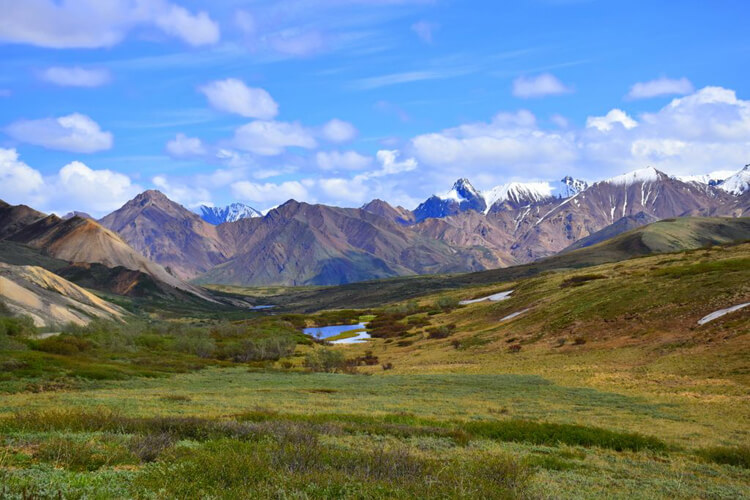
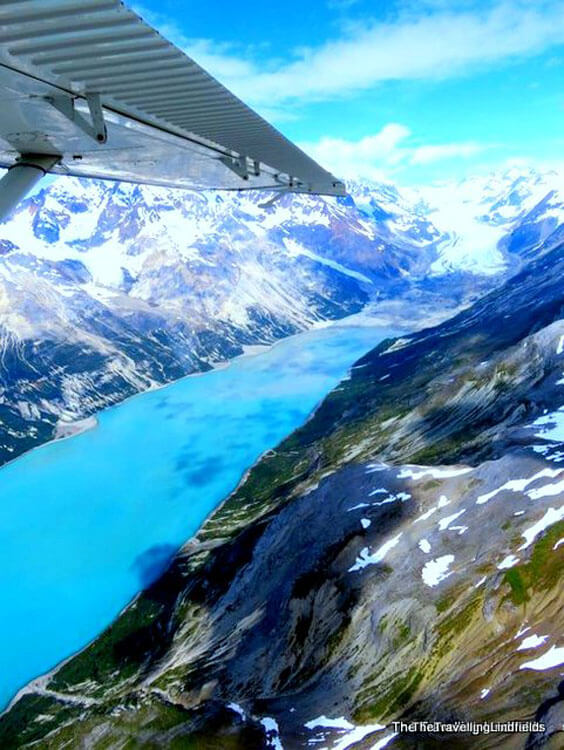
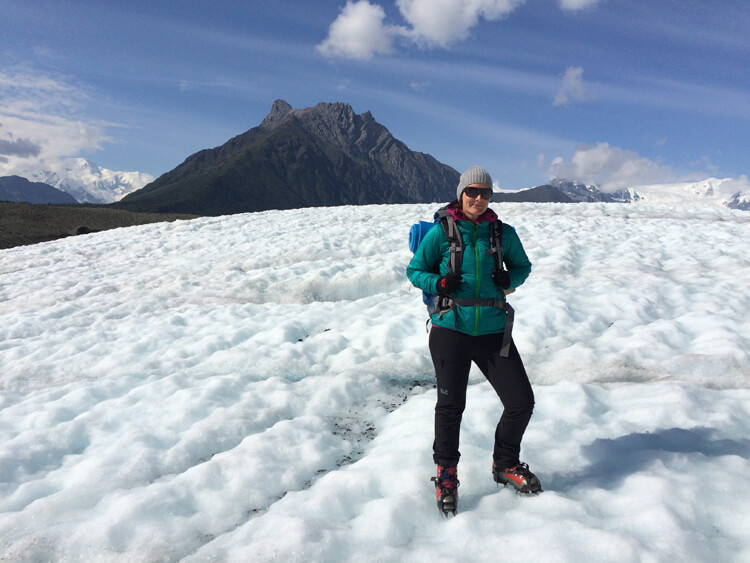
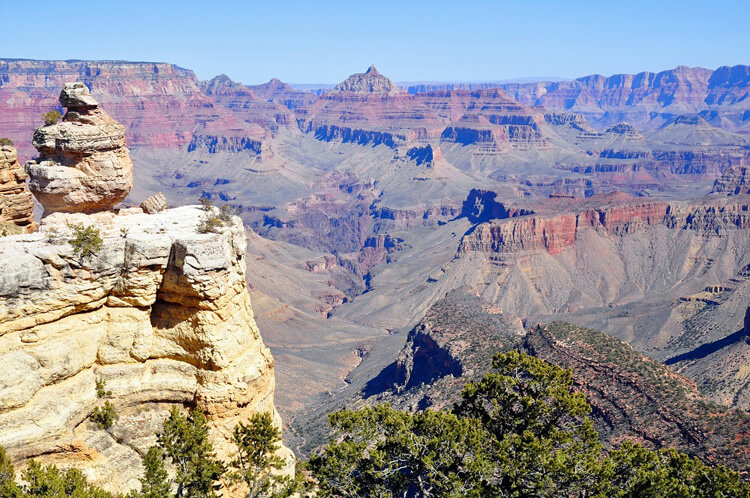

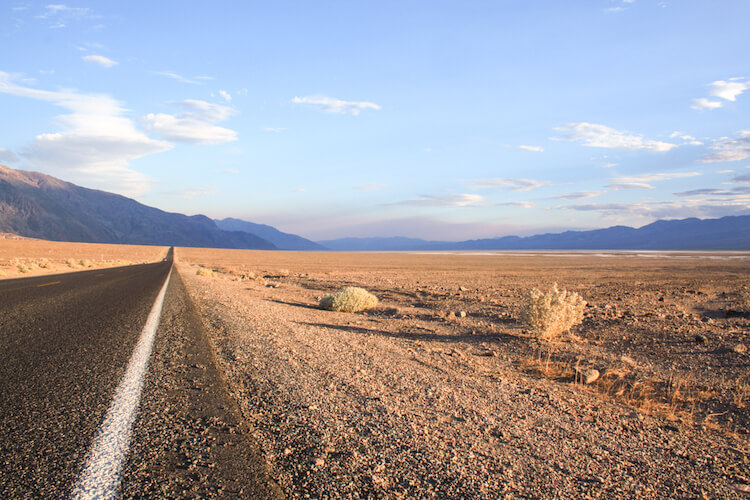



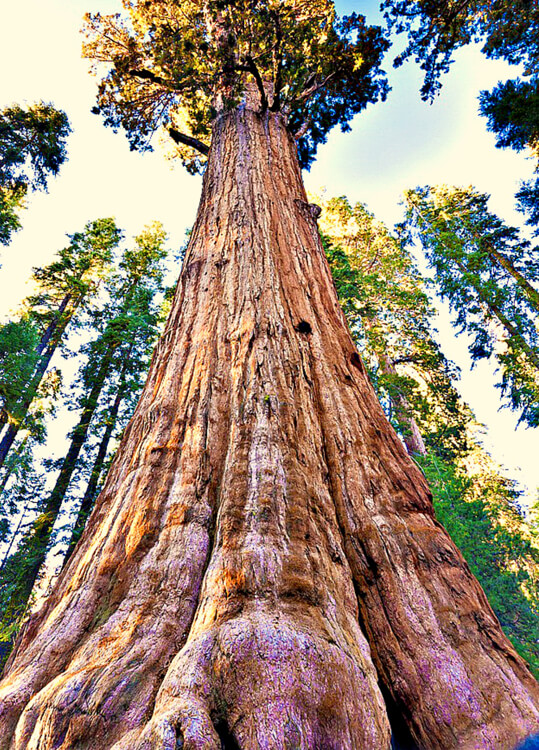


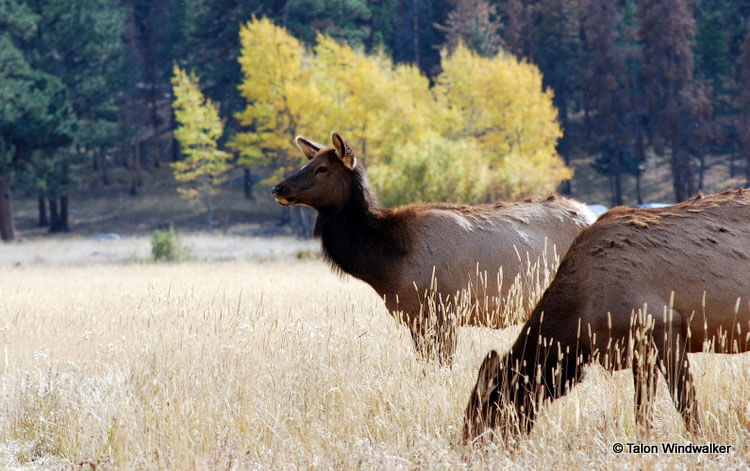
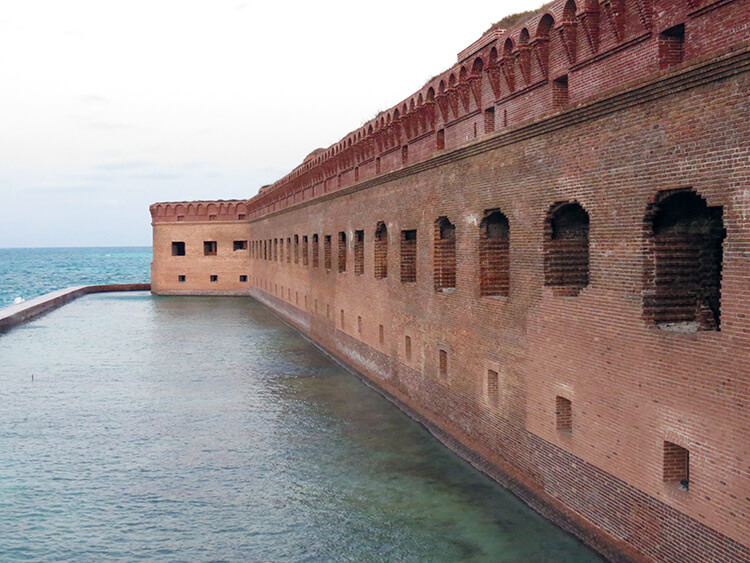

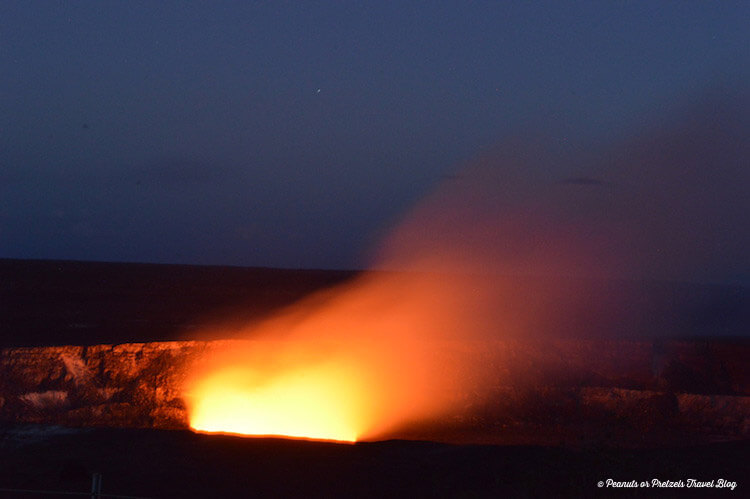
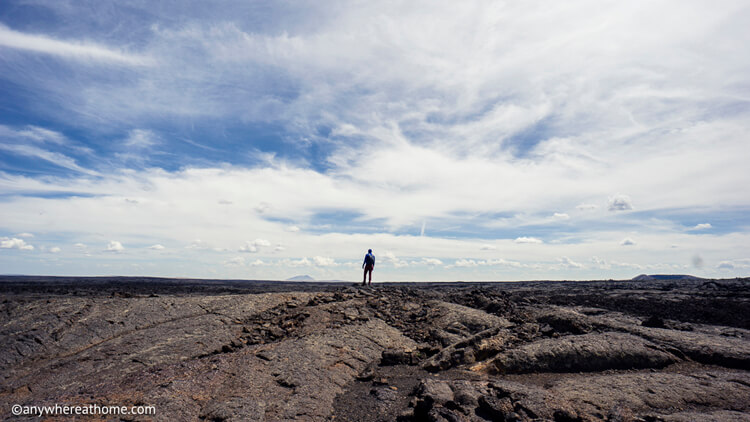




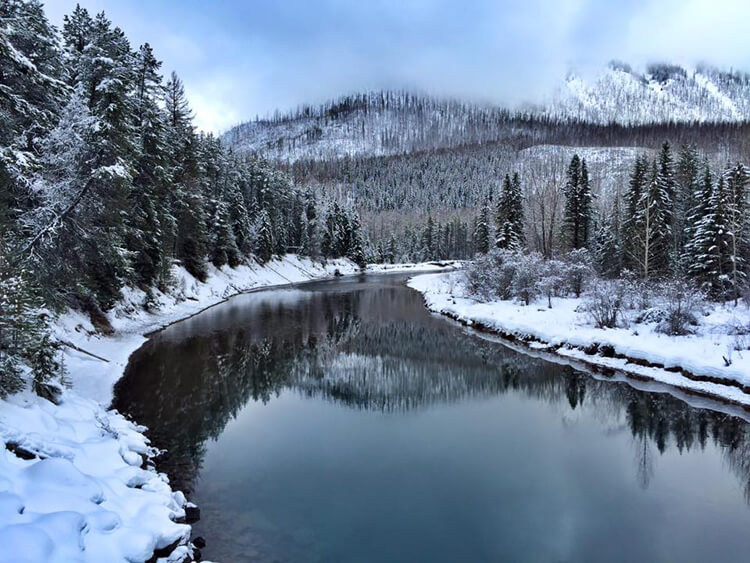
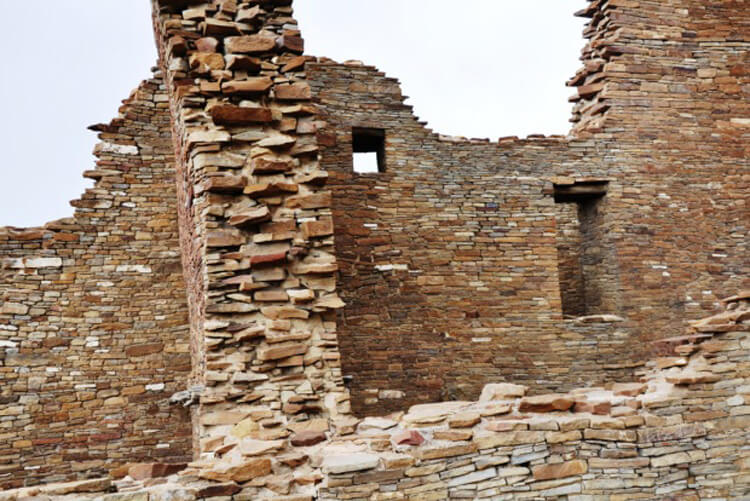
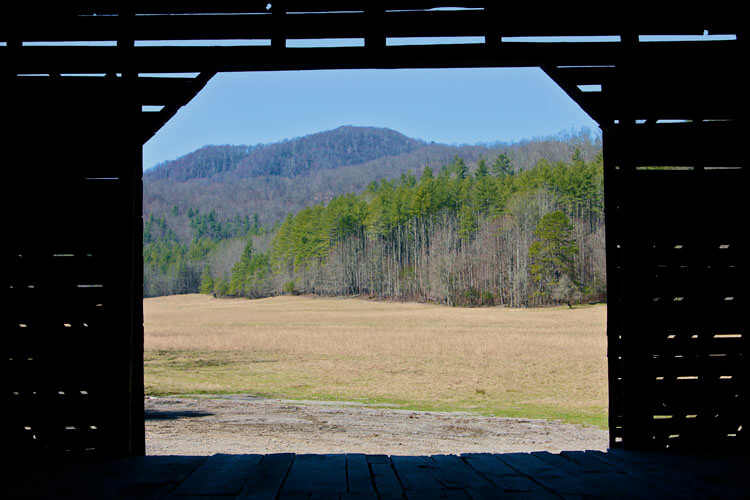

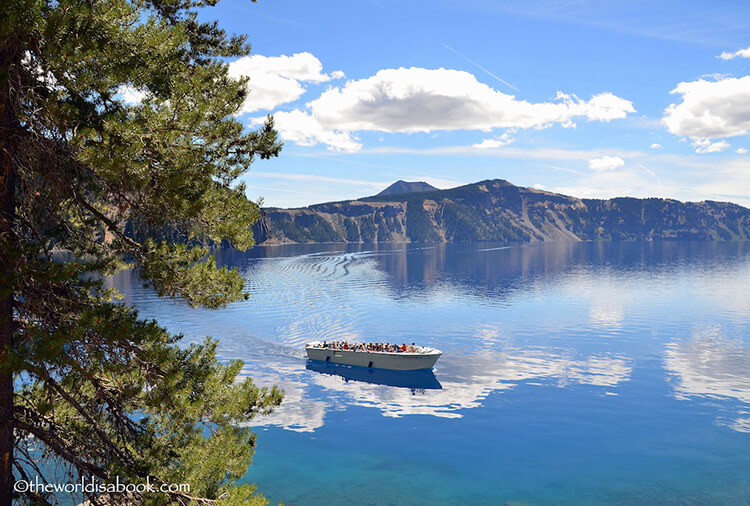

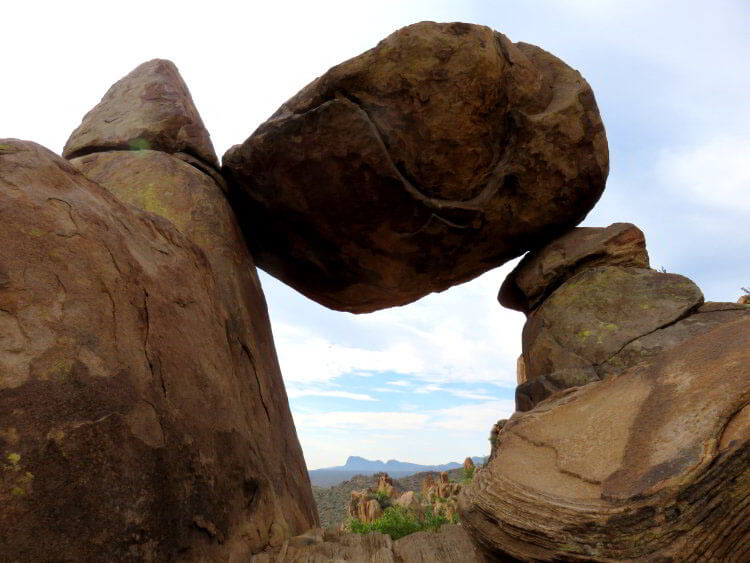
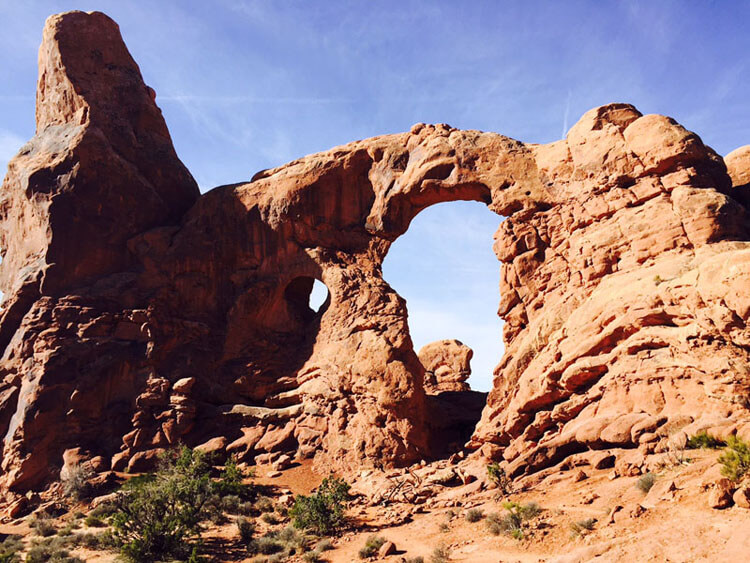

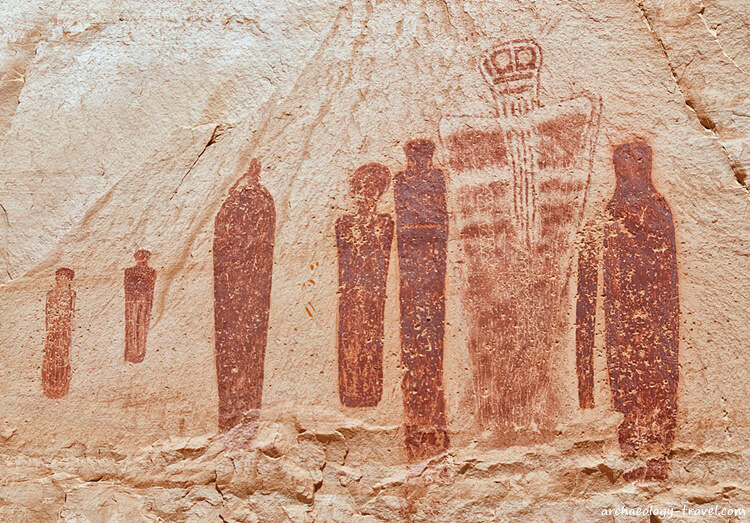
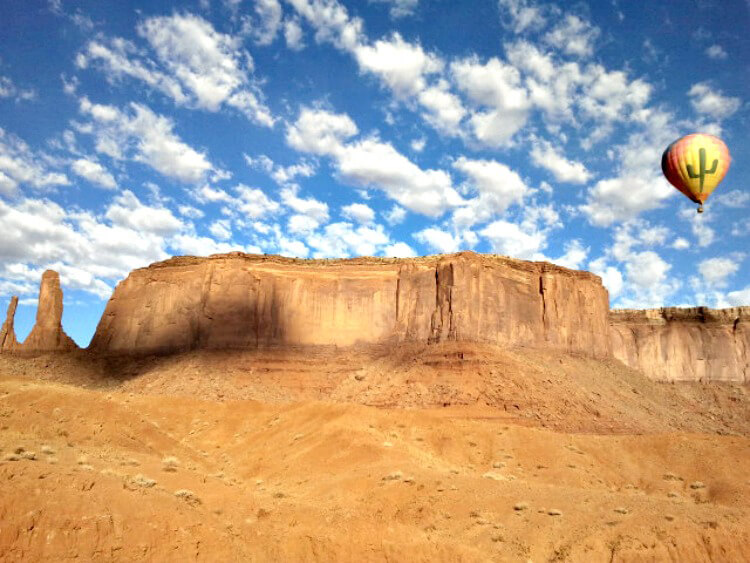
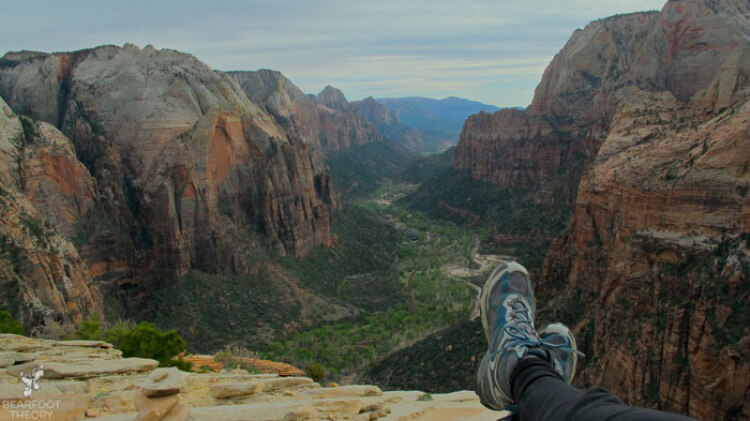
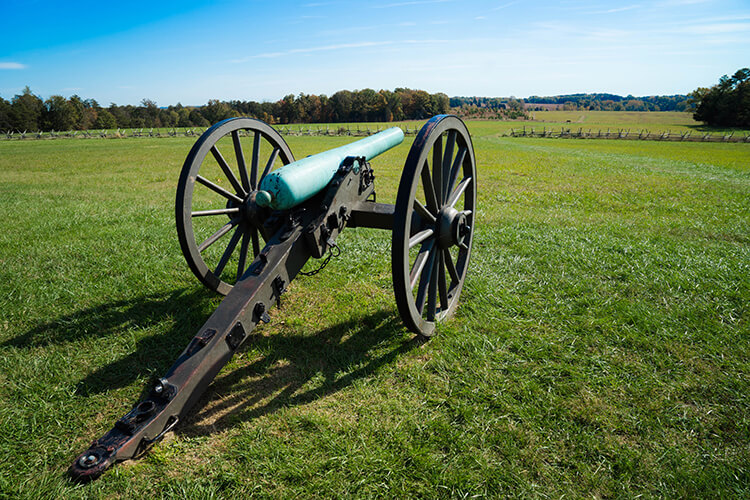


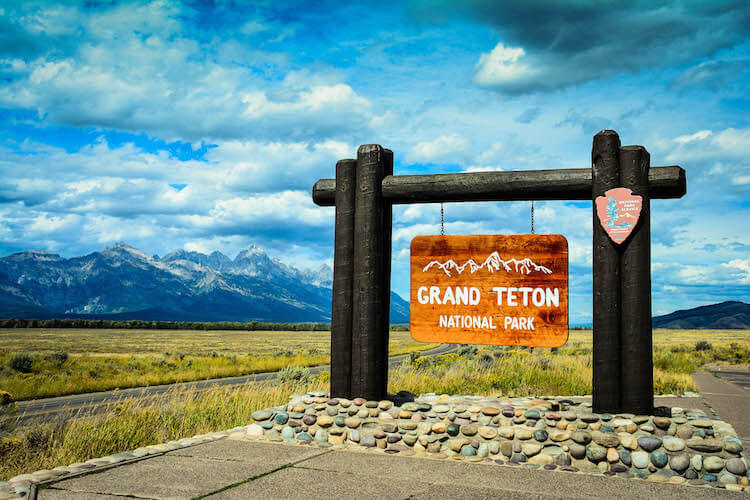
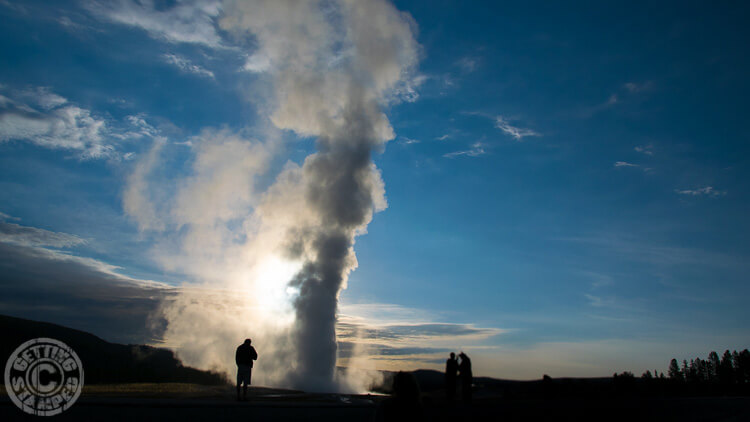
Charles McCool says
What a fantastic collection of USA National Parks. Thank you for including my contribution of the Everglades. I mean really, really, you cannot go wrong with any of these National Parks. Happy 100th anniversary. Go see as many of these as possible.
noel says
So amazing, I’m really excited about seeing post and knowing that I still have so many national parks to visit on my bucket list, thanks for sharing this wonderful post and to celebrate the 100 year centennial
Julie McCool says
Love this wonderful round-up of our beautiful US National Parks! I just bought my annual pass this week (only $80 and good for 1 year from purchase date) so I’m even more motivated to make multiple visits to my local parks and travel to some new ones. Thanks for including my write-up of Shenandoah National Park; I hope some of your readers get to enjoy the view from Stony Man Summit.
Chris Boothman says
Delighted to be featured in such a wonderful, extensive list of national parks! Can’t wait to get out and explore more of America’s beautiful natural landscapes. We are so blessed to have so many stunning spots around us.
Susan Moore says
Love this collection of tips for the best US National Parks, and thanks for including my contribution of Big Bend National Park. These are all great inspiration when planning a road trip! I purchased the annual pass for $80 in October and it has already paid for itself. Love visiting the National Parks for the hiking and getting out to enjoy nature. I plan to see several more on my road trip adventures this year. Happy 100th to US National Park Service!
Hannah says
So many more parks for me to explore!
Andrea Crain says
Hey,
The information you shared is amazing. I’m planning to visit US soon. I’ve added some national parks from your list to my itinerary. The process to get the visa is about to complete. I took guidance from path2usa and it helped me a lot to get my visa asap.
Thanks for sharing the great list of the national parks.
Ryan Nelson says
Anyone ever been to Freedom Park in Charlotte? Might be planning a trip down there- looks like a decent place to take the family on a tranquil, guided walk.